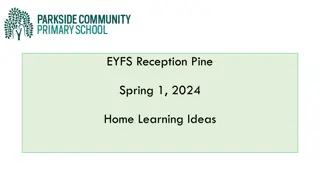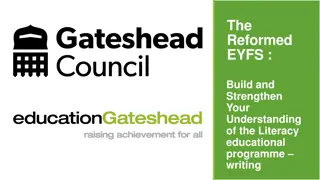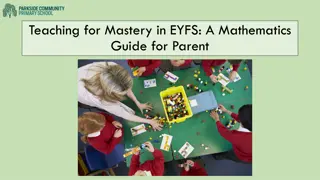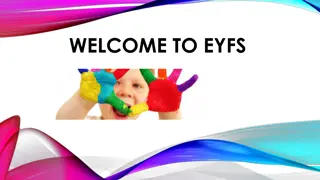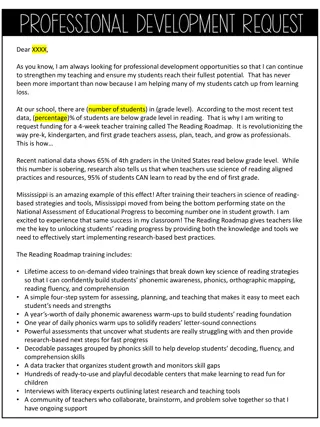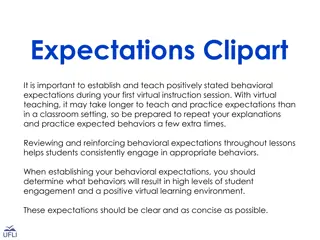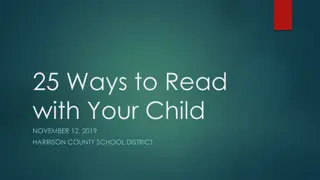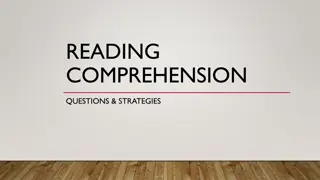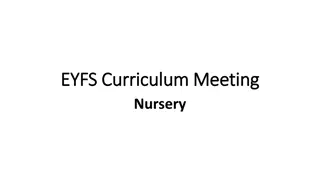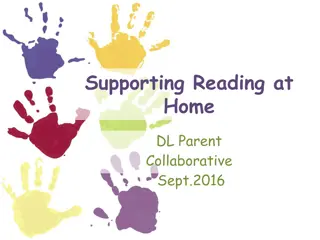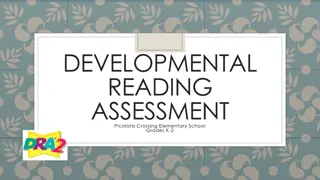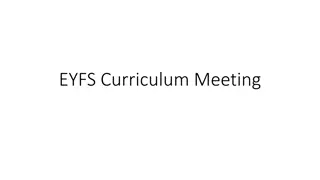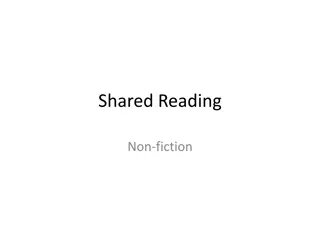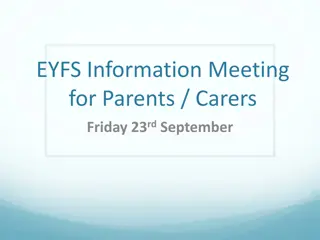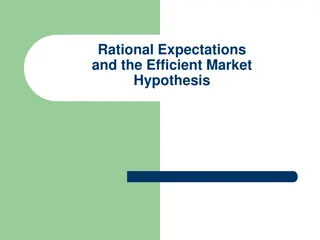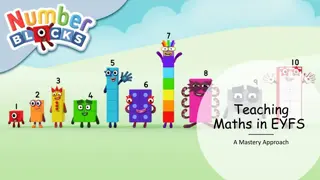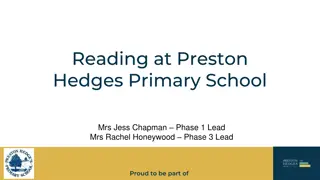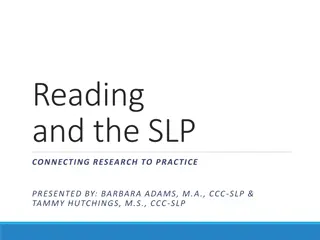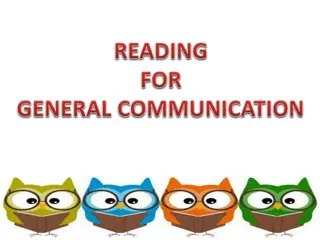Reading Expectations and Teaching Strategies in EYFS
Explore the reading expectations for Nursery and Reception children in the EYFS, covering rhyming activities, phonics, book handling, and early reading skills. Discover effective teaching methods such as using a love of reading, book selection, reading strategies, and interactive guided reading sessions. Tips for supporting reading at home are also provided.
Download Presentation

Please find below an Image/Link to download the presentation.
The content on the website is provided AS IS for your information and personal use only. It may not be sold, licensed, or shared on other websites without obtaining consent from the author. Download presentation by click this link. If you encounter any issues during the download, it is possible that the publisher has removed the file from their server.
E N D
Presentation Transcript
Aims of this session: Outline the expectations in Nursery and Reception for reading Explain how we teach reading in the EYFS Phonics in Nursery and Reception Reading strategies Questions you can ask your child when reading books Give you some ideas on how you can support reading at home
Nursery Reading Expectations 30-50 months Enjoys rhyming and rhythmic activities. Shows awareness of rhyme and alliteration. Recognises rhythm in spoken words. Listens to and joins in with stories and poems, one-to-one and also in small groups. Joins in with repeated refrains and anticipates key events and phrases in rhymes and stories. Beginning to be aware of the way stories are structured. Suggests how the story might end. Listens to stories with increasing attention and recall. Describes main story settings, events and principal characters. Shows interest in illustrations and print in books and print in the environment. Recognises familiar words and signs such as own name and advertising logos. Looks at books independently. Handles books carefully. Knows information can be relayed in the form of print. Holds books the correct way up and turns pages. Knows that print carries meaning and, in English, is read from left to right and top to bottom.
Reception Reading Expectations 40-60 months Continues a rhyming string. Hears and says the initial sound in words. Can segment the sounds in simple words and blend them together and knows which letters represent some of them. Links sounds to letters, naming and sounding the letters of the alphabet. Begins to read words and simple sentences. Uses vocabulary and forms of speech that are increasingly influenced by their experiences of books. Enjoys an increasing range of books. Knows that information can be retrieved from books and computers. Early Learning Goal Children read and understand simple sentences. They use phonic knowledge to decode regular words and read them aloud accurately. They also read some common irregular words. They demonstrate understanding when talking with others about what they have read.
How we teach reading in the EYFS Love of reading Selection of books Reading strategies look at the picture, ask predicting questions Questioning comprehension Provide simple poetry, song, fiction and non-fiction books in all areas, e.g. construction area as well as the book area. Add child-made books and adult-scribed stories to the book area and use these for sharing stories with others. Create an environment rich in print where children can learn about words, e.g. using names, signs, posters. When children can see the text, e.g. using big books, model the language of print, such as letter, word, page, beginning, end, first, last, middle. Carry out activities using instructions, such as reading a recipe to make a cake. Ensure access to stories for all children by using a range of visual cues and story props. For example, story boards, puppets, stuffed animals, etc. Weekly Guided Reading Sessions in Reception.
As a school we follow the letters and sounds phonics. There are 6 phases that are taught from Nursery to Year 2. Phase 1 Foundation of Literacy Learning Tuning into sounds Listening and remembering sounds Talking about sounds Environmental sounds Stories Walk around local area Instrumental sounds Bag of instruments Add sound effects Body percussion Action songs and rhymes Rhythm and rhyme Rhyming stories What rhymes with ? Alliteration Having fun with names Story characters Voice sounds Adding different voices to stories Oral blending and segmenting Robot speech c-a-t and put it together We use jolly phonics to learn the actions and sounds for letters. http://www.youtube.com/watch?v=eCjJYB07aSU&s afe=active Phonics in Nursery
Phonics in Reception Phase 2 In Phase 2, letters and their sounds are introduced one at a time. A set of letters is taught in the following sequence: Set 1: s, a, t, p Set 2: i, n, m, d Set 3: g, o, c, k Set 4: ck, e, u, r Set 5: h, b, f, ff, l, ll, ss As soon as each set of letters is introduced, children will be encouraged to use their knowledge of the letter sounds to blend and sound out words. For example, they will learn to blend the sounds s-a- t to make the word sat. They will also start learning to segment words. For example, they might be asked to find the letter sounds that make the word tap from a small selection of magnetic letters. Tricky words are also taught: the, to, go, no, I Phase 3 By the time they reach Phase 3, children will already be able to blend and segment words containing the 19 letters taught in Phase 2. Set 6: j, v, w, x Set 7: y, z, zz, qu Consonant digraphs: ch, sh, th, ng Vowel digraphs: ai, ee, igh, oa, oo, ar, or, ur, ow, oi, ear, air, ure, er New tricky words are taught: he, she, we, me, be, was, you, they, are, all, my, her
Become the Teacher! Have a look at some books can you think of some questions you could ask your child?
How to support reading at home Share books together in a positive way. Go to the library Sing songs and nursery rhymes together on repeat! Tell a story together, eg. Once upon a time there was .. He lived in . One day he decided to Read books with no words and create the story together. Use the environment as a teacher. Read bus numbers. At the shop, read the labels with your child, skimming the words with your finger so your child can follow the print. Ask comprehension questions. Did they like the story? Why? Why not? Read the reading book your child brings home at least 3 times every week for 10 minutes a night.
Read homework letters so you know what your child has been learning I spy game Model how to follow the text with your finger when you read. Model how to read and sound out simple words using phonics. Model how to use other reading strategies when reading.
Thank you for coming


